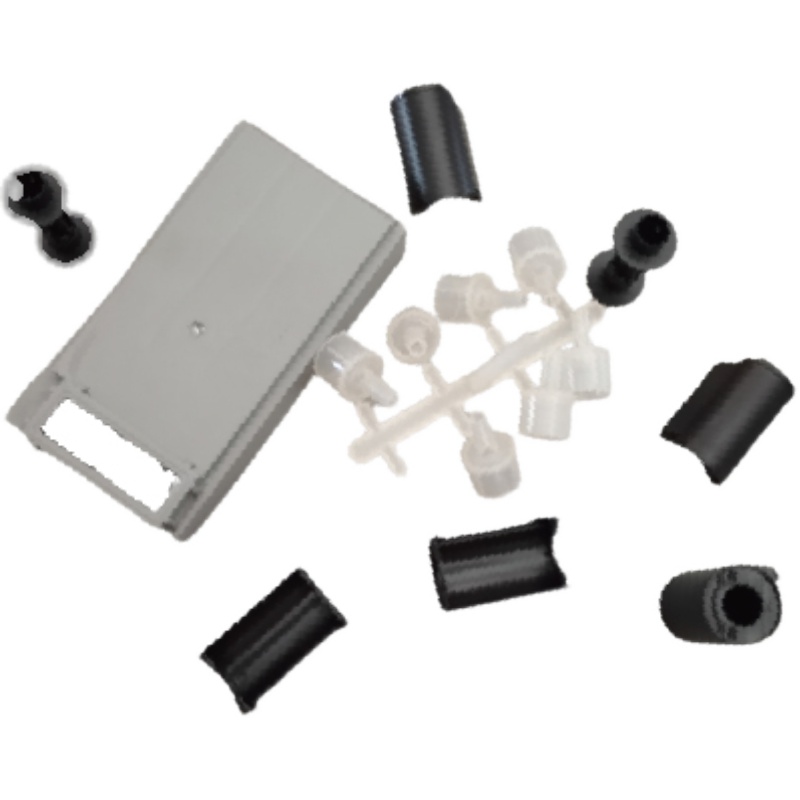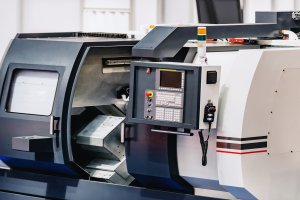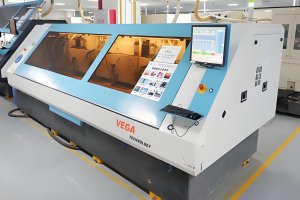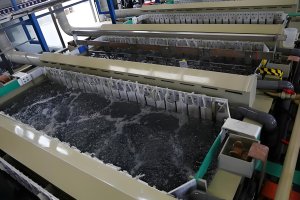Introduction to Micro Injection Molding
Micro injection molding is a specialized form of manufacturing that enables the production of small and intricate plastic parts with precision. The process involves injecting thermoplastic or thermosetting polymers into a mold at high pressure, which results in the material conforming to the shape of the mold cavity. Unlike traditional injection molding, micro injection molding focuses on producing components on a micro scale, often weighing less than a gram and featuring extremely tight tolerances. This requires advanced machinery capable of accurate shot-to-shot consistency and control over factors such as temperature, injection speed, and pressure. The key distinction from its conventional counterpart lies in the miniaturization and precision required, opening up new avenues for innovation in various industries where small, complex parts are necessary.
Principle of Micro Injection Molding
The principle behind micro injection molding lies in the precise and controlled injection of a thermoplastic material into a mold that is engineered on a micro scale. This equipment, often miniaturized to accommodate the small-scale operations, operates with incredibly fine movements to ensure accuracy down to micrometers. The mechanism parallels conventional injection molding but is vastly more intricate, integrating advanced robotics and scaled-down components capable of injecting minuscule shot weights with high repeatability. Mold design in this domain is critical and revolves around selecting suitable materials that can maintain tight tolerances upon cooling and ejection – typically, high-grade metals such as stainless steel or alloys are used for their durability and precision. Mold components must be fabricated with extreme precision, often involving specialized machining technology like electrical discharge machining (EDM), to create features that may be invisible to the naked eye.
Benefits of Micro Injection Molding
The precision and capability to produce intricate small parts are among the most significant advantages of micro injection molding. This technology allows for the manufacturing of components with minute features and tight tolerances that would be unfeasible through conventional molding methods. Furthermore, it enhances efficiency and minimizes material waste, as the process uses exact quantities of plastic, reducing excess and cutting down on production costs. Customization potential is another benefit, allowing for tailored solutions in specialized applications such as medical devices or microelectronics, where bespoke designs and functionalities are critical. By employing this precise technique, manufacturers can provide unique products designed to meet specific industry demands while maintaining high-quality standards.
Applications of Micro Injection Molding in Various Industries
The medical industry frequently employs micro injection molding to create precise, miniature components vital for medical devices such as surgical tools, implants, and diagnostic equipment; a specific example includes the production of small-scale drug delivery systems that feature micron-sized channels. In electronics, this technique is central to fabricating minute yet complex parts like connectors and micro switches integral to ensuring the compactness and functionality of modern gadgets. Beyond these sectors, micro molding technology benefits various industries by enabling the mass production of tiny, intricate parts with high precision at reduced material costs—for instance, in the automotive field producing minute sensors or in aerospace manufacturing critical lightweight components without compromising on strength or reliability.
Material Considerations in Micro Injection Molding
In micro injection molding, the choice of material is pivotal to achieving the desired characteristics and functionality of the final product. Commonly used materials include thermoplastics such as polyethylene (PE), polycarbonate (PC), and polyamide (PA) due to their ease of flow into fine features and excellent mechanical properties. Specialty compounds like liquid crystal polymers (LCPs) find use when high-temperature resistance or dimensional stability is required. The selection of a particular material affects not only the moldability and process parameters but also the durability, precision, and biocompatibility of the micro-molded components. For instance, using a high-flexural modulus polymer can enhance part rigidity but may necessitate specific considerations for tool design to ensure proper filling. Ultimately, understanding the relationship between material properties and product requirements is essential for successful micro-injection molded applications.
Technical Challenges in Micro Injection Molding
In the arena of micro injection molding, one of the crucial technical hurdles is managing flow and pressure throughout the fabrication process. Precisely controlling the molten polymer as it flows into exceptionally small and intricate mold cavities requires advanced machinery capable of maintaining consistent and uniform application of both heat and pressure. Achieving consistency in quality for such minute components further compounds the difficulty. Variability can easily arise from slight deviations that would otherwise be inconsequential in larger-scale production. For example, ensuring uniform cooling in all areas of a component to avoid warping or internal stresses becomes paramount when dealing with tiny parts where tolerances are minimal. This specificity demands rigorous monitoring and feedback systems to adjust parameters in real-time for each unique production cycle.
Future Outlook for Micro Injection Molding
The future of micro injection molding is poised to expand substantially due to advancements in technology and materials that enable the production of highly precise and intricate components. Innovations such as high-resolution 3D printing for mold making, nanoparticle-filled polymers for enhanced properties, and smart sensors for improved process control are pushing the boundaries of what can be achieved with this technique. These technological improvements will open up new growth sectors where miniaturization is critical, including microelectronics, medical devices, and biological implants. For instance, in the medical field, micro molding could lead to the creation of minute, yet complex parts for less invasive surgical instruments or drug delivery systems. The industry’s trajectory suggests a transformation, facilitating more bespoke applications across diverse industries driven by consumer demand for smaller, more efficient products.
Other Articles You Might Enjoy
- Micro Injection Molding: Principle, Benefits, and Applications
Introduction to Micro Injection Molding Micro injection molding is a high-precision manufacturing process used in producing miniature and intricate plastic parts. This procedure, employing specialised machines with high-pressure moulding capabilities…
- Micro Injection Molding: Principle, Benefits, and Applications
Introduction to Micro Injection Molding Micro injection molding is an advanced manufacturing technique that miniaturizes traditional injection molding processes. The principle of micro injection molding revolves around producing tiny, intricate…
- Precision Micro Injection Molding: Essential Advantages and Versatile Applications
Micro injection molding is a specialized form of manufacturing that enables the production of small and intricate plastic parts with high precision. It stands as an essential technique in various…






